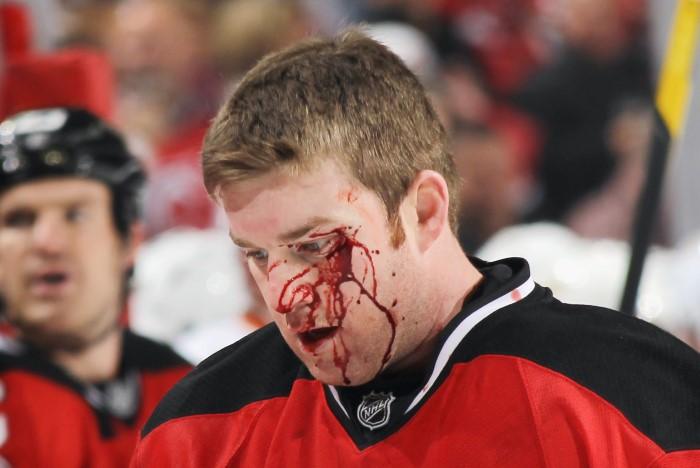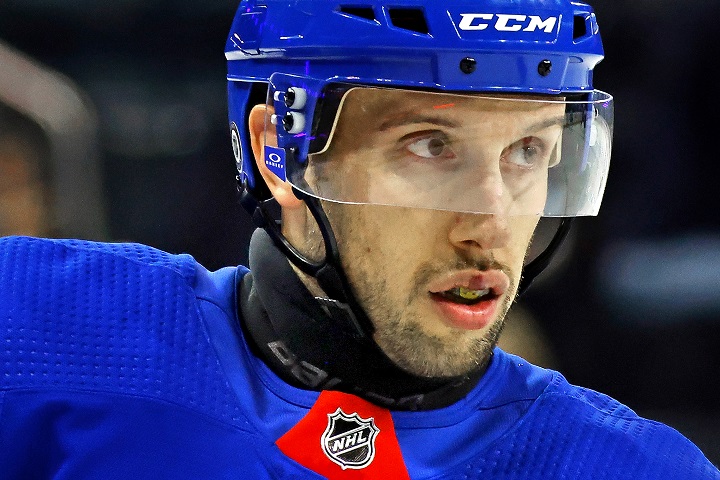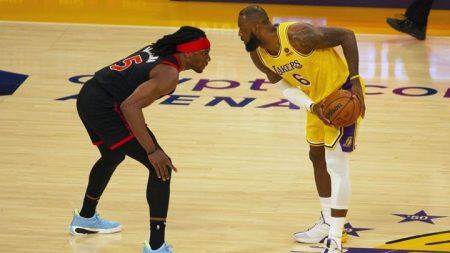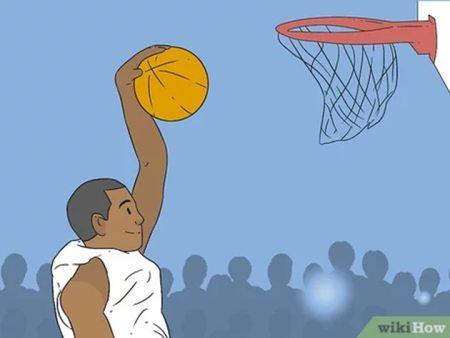Hockey, often regarded as one of the fastest and most intense sports, is known for its thrilling pace, precision, and the occasional brawl. But beneath the electrifying action and roaring crowds lies a darker side—one that most fans rarely contemplate. Every sport comes with risks, but few incidents can compare to the gut-wrenching horror of a hockey player’s throat being cut on the ice. This rare but devastating occurrence highlights the inherent dangers that athletes face in pursuit of greatness.
In this article, we delve into the alarming incidents of throat injuries in hockey, the bravery of players who have survived, the measures the sport has taken to improve safety, and the emotional and psychological aftermath for everyone involved.
A Look Back at the History of Hockey’s Most Traumatic Injuries

Hockey has always been a high-contact sport, where athletes move at lightning speed across the ice while wielding sharp metal blades on their feet. Collisions are inevitable, and injuries are not uncommon. But every once in a while, the game turns from a battle for victory into a fight for survival.
Clint Malarchuk: A Survivor’s Tale
Perhaps the most infamous example of a throat injury in hockey happened on March 22, 1989, when Buffalo Sabres goalie Clint Malarchuk faced a near-fatal injury. During a game against the St. Louis Blues, an opposing player collided with Malarchuk, causing the skate of Blues forward Steve Tuttle to slash his throat. The blade severed Malarchuk’s jugular vein, leaving the ice covered in blood and spectators horrified.
As blood spurted uncontrollably from his neck, many in the arena feared the worst. Miraculously, thanks to the immediate intervention of the team’s trainer, Jim Pizzutelli, who had served as a medic in the Vietnam War, Malarchuk’s life was saved. Pizzutelli applied pressure to the wound and kept Malarchuk calm until paramedics arrived. The goalie would later say that he told himself to stay conscious because he didn’t want to die on the ice in front of his mother, who was watching the game on TV.
Malarchuk’s recovery was nothing short of miraculous. He required over 300 stitches to close the wound, but shockingly, just 10 days later, he returned to the ice to play again.
Richard Zednik: History Repeats Itself
Another terrifying incident occurred on February 10, 2008, when Florida Panthers forward Richard Zednik suffered a similar fate. During a game against the Buffalo Sabres, Zednik’s teammate Olli Jokinen lost his balance, and his skate accidentally sliced Zednik’s carotid artery. Once again, the ice was stained red, and the crowd was stunned into silence as Zednik raced toward the bench, clutching his throat.
Thankfully, medical personnel were able to stabilize Zednik, and after surgery, he too recovered. His swift recovery mirrored that of Malarchuk, and Zednik was back playing hockey the following season.
These harrowing events serve as chilling reminders of the potential for life-threatening injuries in the sport of hockey. Both Malarchuk and Zednik were incredibly lucky to survive their accidents, but the incidents prompted renewed scrutiny of player safety and a rethinking of protective measures in the sport.
The Importance of Neck Protection in Hockey
The shocking nature of these injuries has led to increasing awareness of the need for throat protection in hockey. After all, players are speeding across the ice, often colliding with one another or falling to the ground. The sharp blades on their skates pose a serious threat, especially when they get too close to sensitive areas like the neck.
The Debate Over Protective Gear
Following Malarchuk’s injury, there was significant debate about whether or not neck guards should be mandatory in the NHL. While many youth hockey leagues require neck protection, the NHL has been reluctant to enforce such a rule. Critics argue that neck guards can restrict movement and may be uncomfortable for players.
However, incidents like those of Malarchuk and Zednik have prompted some players to take precautions into their own hands. Some professional players choose to wear neck guards or Kevlar-reinforced undershirts, which are designed to reduce the risk of a skate blade penetrating the skin.
Youth Hockey’s Emphasis on Safety
At the youth level, safety has become a top priority. Many minor hockey leagues around the world require players to wear throat protection, and manufacturers have responded by producing better and more comfortable neck guards. While no piece of equipment can offer 100% protection, the goal is to reduce the risk as much as possible.
It’s not just about throat injuries either. Hockey has seen a rise in awareness surrounding concussions, broken bones, and other potentially career-ending injuries. Helmets, face shields, and padding have all improved significantly over the past few decades, but the conversation surrounding throat protection remains a critical focus for those overseeing the safety of the sport.
The Psychological and Emotional Toll of Such Incidents
When a player suffers a life-threatening injury on the ice, the physical recovery is only part of the story. The emotional and psychological trauma can be equally daunting. Both Clint Malarchuk and Richard Zednik have spoken openly about the lasting mental effects of their injuries.
Clint Malarchuk’s Mental Health Struggles
While Malarchuk was fortunate to survive his injury, the aftermath was far from smooth. He struggled with post-traumatic stress disorder (PTSD), depression, and anxiety in the years following the incident. Malarchuk has since become an advocate for mental health, sharing his personal battles in an effort to help others who may be struggling.
In his book, A Matter of Inches: How I Survived in the Crease and Beyond, Malarchuk recounts his struggles, not just with the trauma of his near-death experience, but also with the pressures of being a professional athlete. His story has resonated with countless individuals, both inside and outside the hockey world, shedding light on the importance of addressing mental health concerns in sports.
Zednik’s Quiet Return
In contrast, Richard Zednik’s recovery was quieter. Though his physical rehabilitation was grueling, he opted to avoid the media spotlight as much as possible. However, his return to hockey inspired many. After suffering such a horrific injury, the fact that Zednik was willing to step back onto the ice was a testament to his resilience.
Both players’ stories highlight the intense mental and emotional challenges that come with surviving a traumatic injury. It’s not just about healing the body—the mind must also process and recover from the shock of nearly losing one’s life.
The Impact on Teammates and Fans

The psychological toll of such injuries doesn’t just affect the player involved. Teammates, opponents, and even spectators can be deeply affected by witnessing such a traumatic event.
The Locker Room Aftermath
Teammates of players who suffer severe injuries often struggle with their own emotions. Many players report feelings of guilt, even if the injury was accidental. In the case of Richard Zednik, his teammate Olli Jokinen was visibly shaken after the incident, and it took time for him to come to terms with what had happened.
Teammates may also experience anxiety when returning to the ice, as they are reminded of the inherent dangers of the sport. Hockey players are conditioned to play through pain and injury, but moments like these serve as a stark reminder that the game can be deadly.
Fans’ Reactions
For fans, witnessing such an event can be traumatic as well. Those in attendance during Clint Malarchuk’s and Richard Zednik’s injuries described a feeling of helplessness and shock. The sight of blood on the ice is jarring, and it disrupts the usual excitement and entertainment that fans seek from the game.
Some fans may even choose to stop attending or watching games after witnessing such a traumatic incident, as the event forces them to confront the violent nature of the sport. However, for many, the bravery and resilience shown by players like Malarchuk and Zednik become sources of inspiration.
What’s Being Done to Prevent These Tragedies?
Hockey authorities have taken significant steps to improve player safety in recent years, but incidents like Malarchuk’s and Zednik’s still haunt the sport. As technology improves and awareness increases, the hope is that life-threatening injuries will become a thing of the past.
Advances in Equipment Technology
In response to these tragic incidents, companies have developed improved protective gear that aims to shield vulnerable areas like the neck. Kevlar-reinforced clothing, neck guards, and even innovations in skate design have all contributed to minimizing the risk of severe injuries.
While the NHL has yet to mandate neck guards, more and more players are taking it upon themselves to wear them. As technology advances and gear becomes more comfortable and less restrictive, we may see a shift in attitudes toward mandatory protection.
Rule Changes and Penalties
The NHL has also instituted rule changes aimed at reducing dangerous plays that could lead to severe injuries. Penalties for high-sticking, slashing, and other infractions involving contact with the head or neck have become more severe. By enforcing stricter penalties, the league hopes to discourage dangerous behavior on the ice.
In addition, leagues at all levels have placed a greater emphasis on player safety training. Coaches, referees, and players are taught how to recognize and respond to injuries quickly and effectively, ensuring that help is available as soon as an accident occurs.
A Dangerous Game with a Brave Legacy
Hockey remains one of the most thrilling and exhilarating sports in the world, but the risk of injury is always present. The incidents involving Clint Malarchuk and Richard Zednik are powerful reminders of just how dangerous the game can be.







